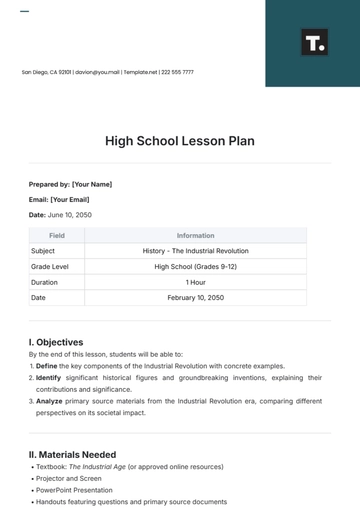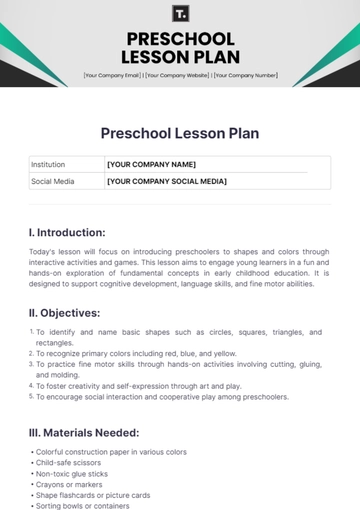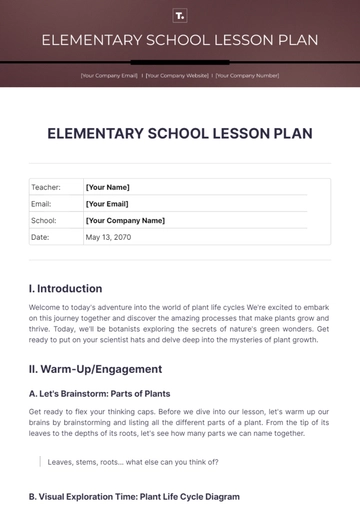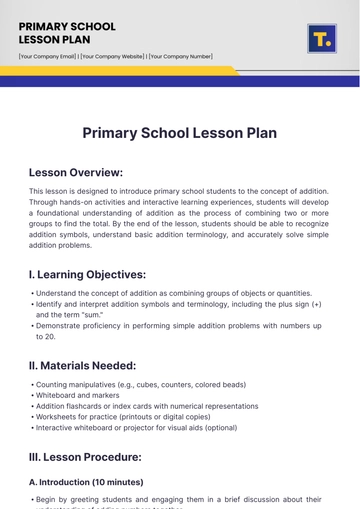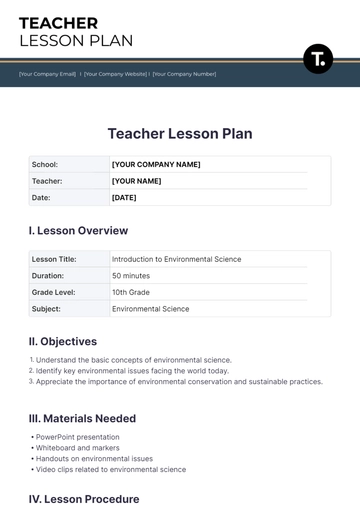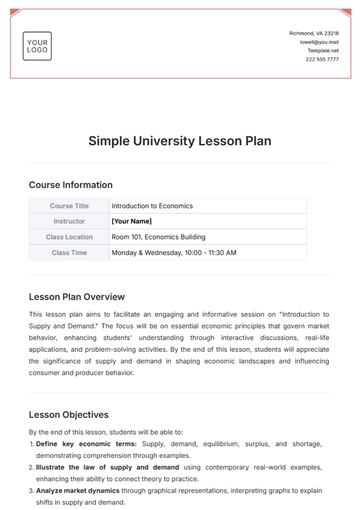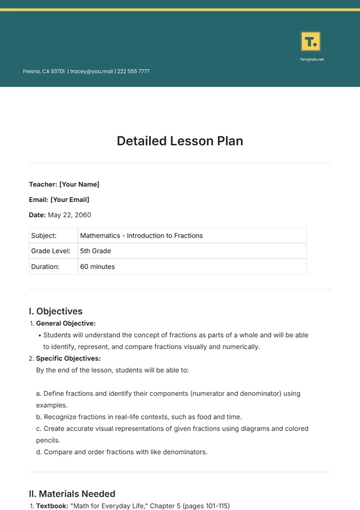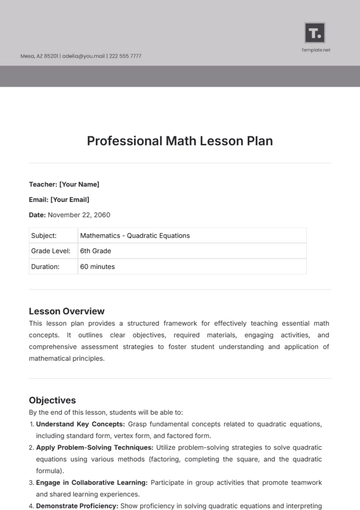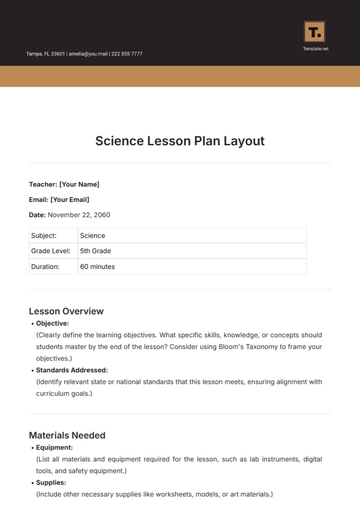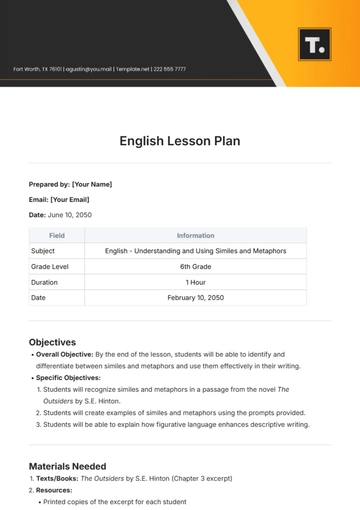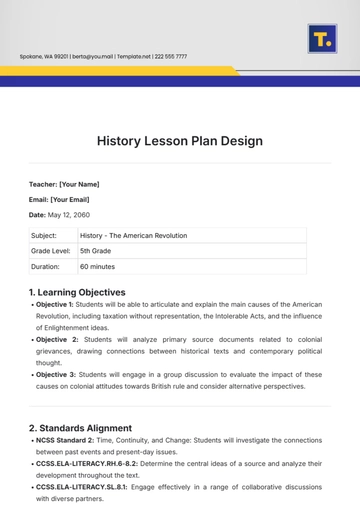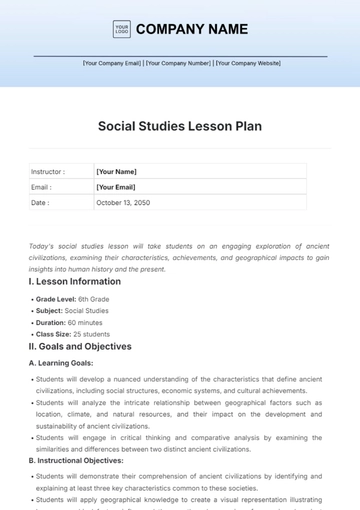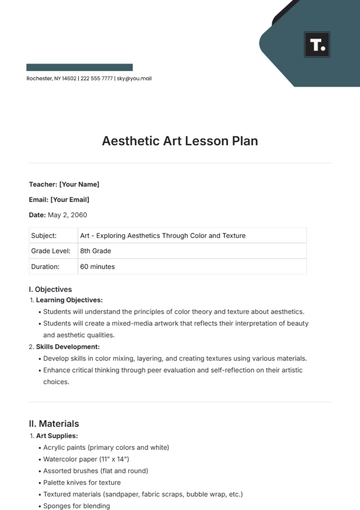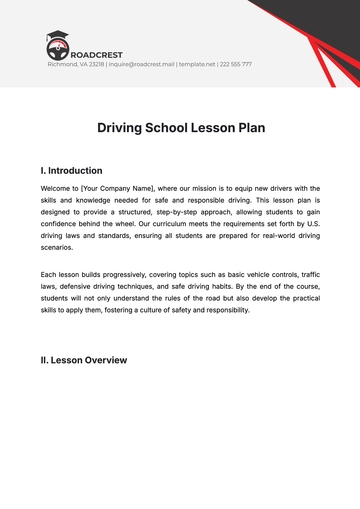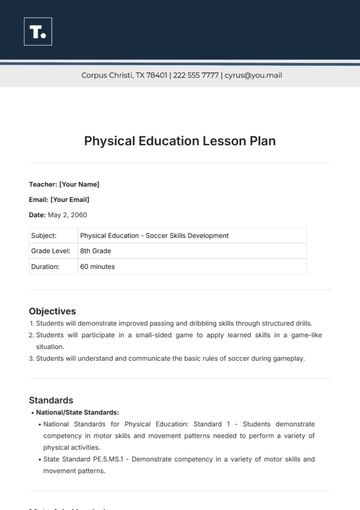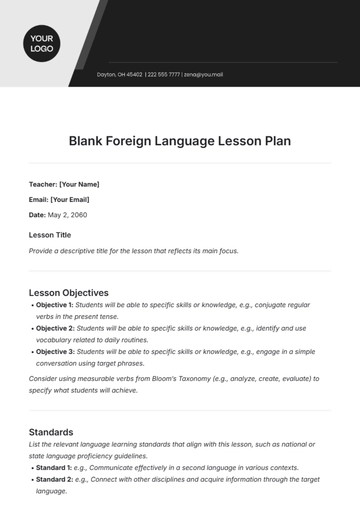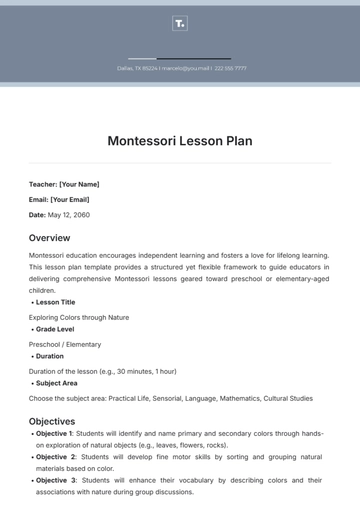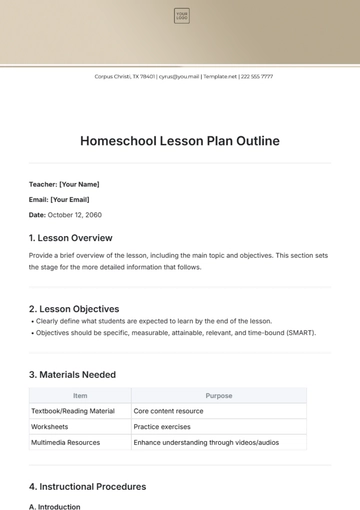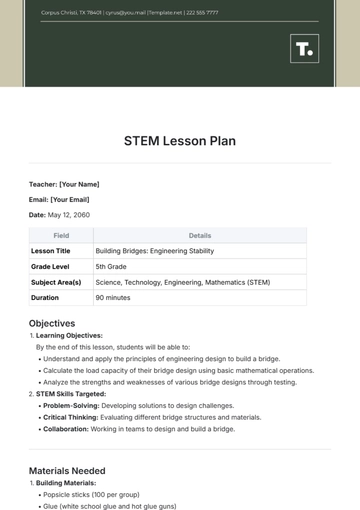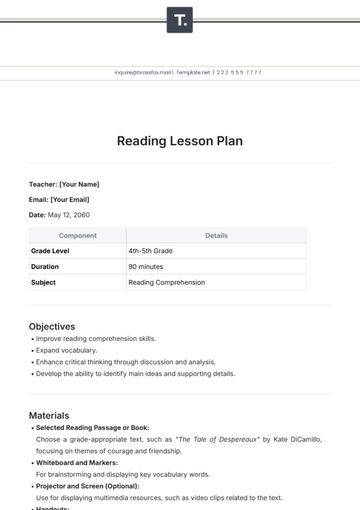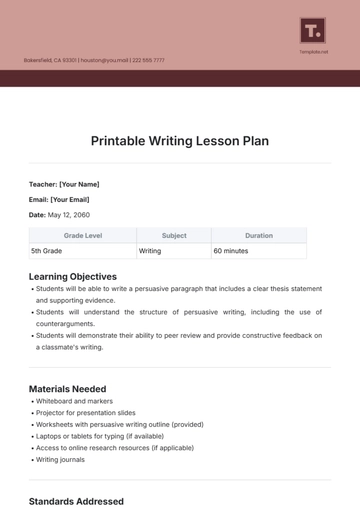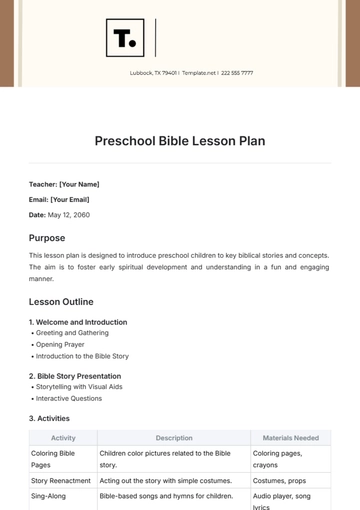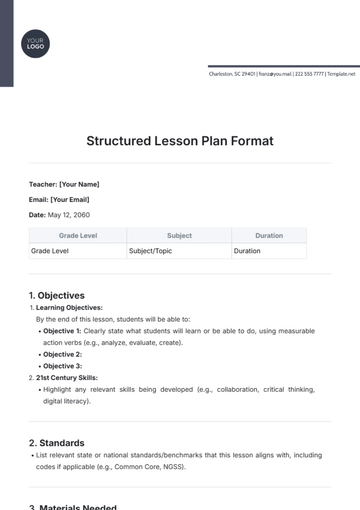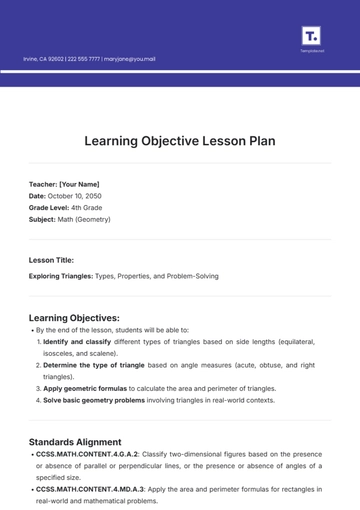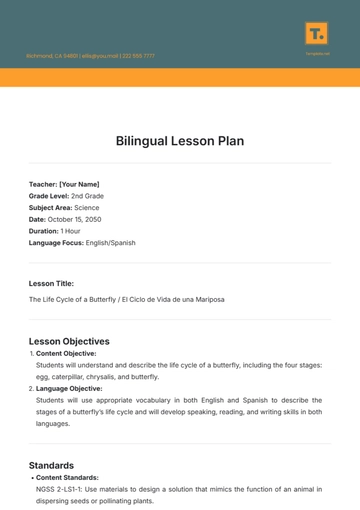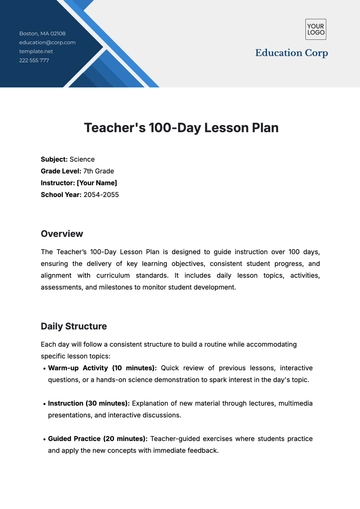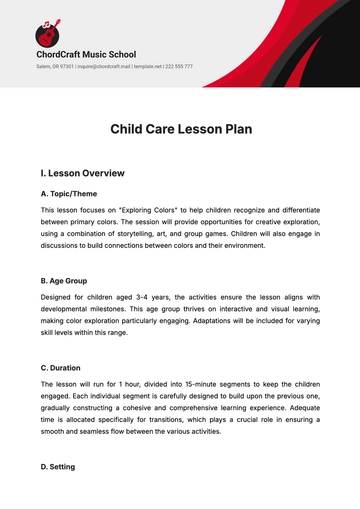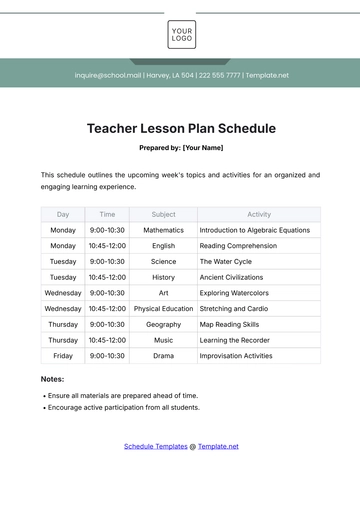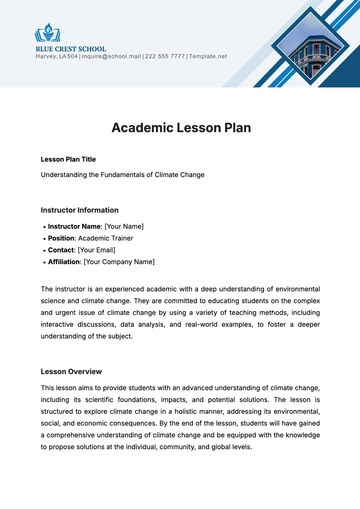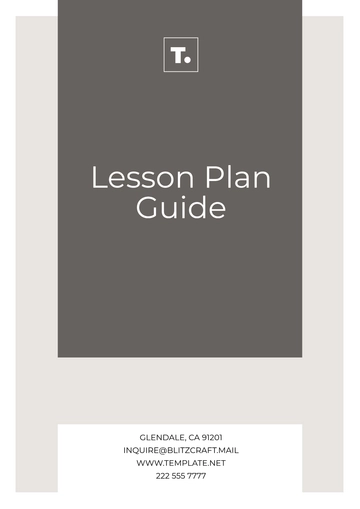Free Montessori Lesson Plan
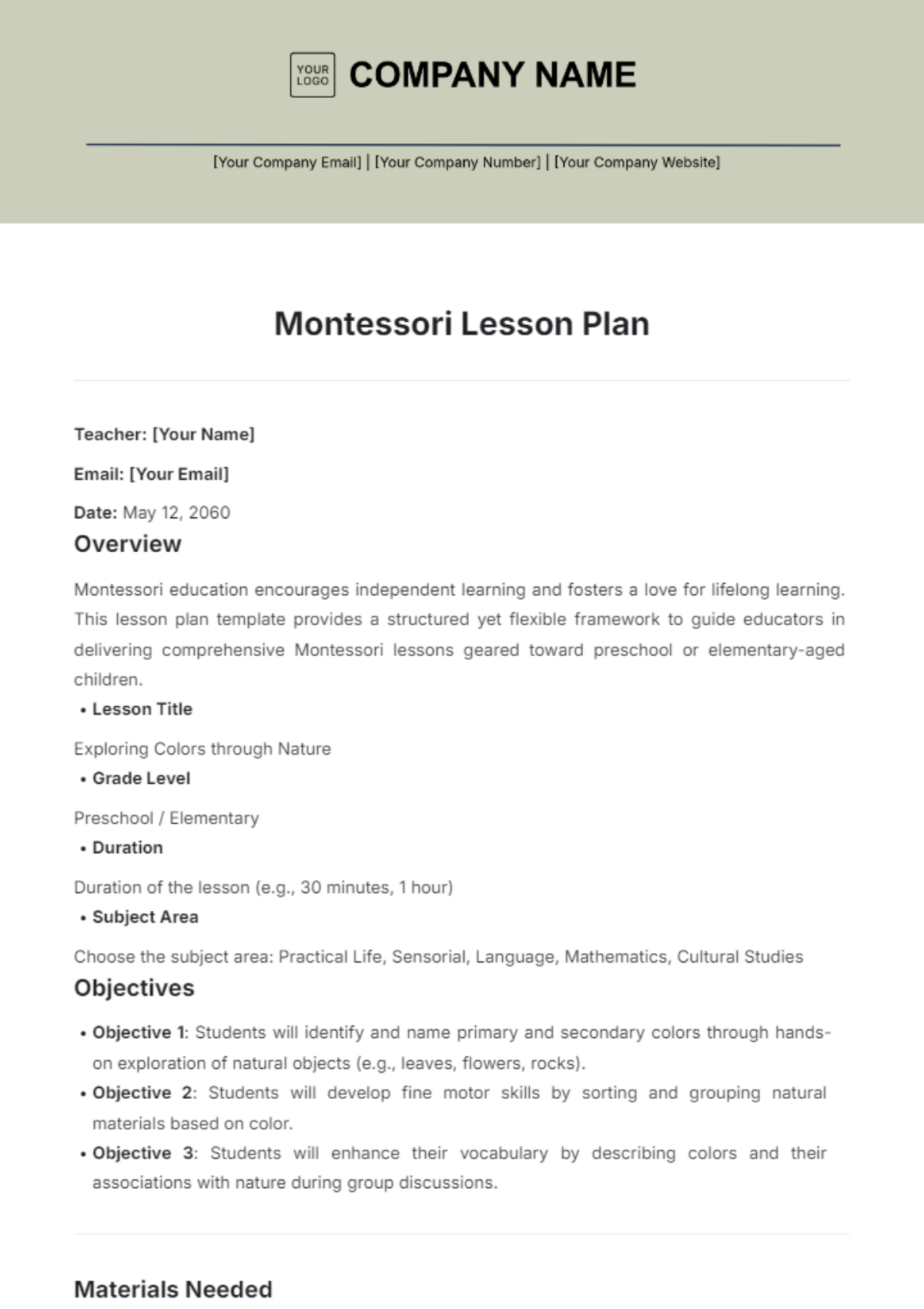
Teacher: [Your Name]
Email: [Your Email]
Date: May 12, 2060
Overview
Montessori education encourages independent learning and fosters a love for lifelong learning. This lesson plan template provides a structured yet flexible framework to guide educators in delivering comprehensive Montessori lessons geared toward preschool or elementary-aged children.
Lesson Title
Exploring Colors through Nature
Grade Level
Preschool / Elementary
Duration
Duration of the lesson (e.g., 30 minutes, 1 hour)
Subject Area
Choose the subject area: Practical Life, Sensorial, Language, Mathematics, Cultural Studies
Objectives
Objective 1: Students will identify and name primary and secondary colors through hands-on exploration of natural objects (e.g., leaves, flowers, rocks).
Objective 2: Students will develop fine motor skills by sorting and grouping natural materials based on color.
Objective 3: Students will enhance their vocabulary by describing colors and their associations with nature during group discussions.
Materials Needed
Natural Objects: A variety of natural materials such as leaves, flowers, and stones in multiple colors (red, blue, yellow, green, orange, purple).
Color Sorting Trays: Wooden or plastic trays are divided into sections for sorting objects by color.
Color Wheel: A color wheel to help children visualize primary and secondary colors.
Preparation
Arrange the classroom with tables set for group work and independent exploration.
Collect and clean a variety of natural materials in different colors to ensure safe handling.
Prepare color sorting trays, placing them at each workstation.
Set up a display area with a color wheel for reference during discussions.
Presentation
Introduction: Gather the children in a circle and introduce the lesson by discussing colors found in nature. Ask questions like, “What colors do you see outside?” to engage their curiosity.
Demonstration: Show the children how to sort natural objects by color using the sorting trays. Demonstrate how to group similar colors together and discuss the process, emphasizing the names of the colors as you sort.
Guided Practice: Invite children to join in the sporting activity, offering assistance and encouragement. Circulate among the groups, providing feedback and facilitating discussions about their findings.
Independent Practice: Allow children to explore the natural materials independently. Encourage them to choose their objects and sort them by color. This can be followed by an activity where they create a colorful nature collage using the sorted materials.
Assessment
Observation Notes: Educators will observe and note each child's ability to identify and sort colors, taking mental or written notes on their participation.
Checklists: Use a checklist to assess children's engagement levels and understanding of color concepts.
Informal Discussions: Conduct brief discussions with individual children or groups to gauge their understanding and enthusiasm about the lesson.
Adaptations
For children who struggle with fine motor skills, provide larger materials or allow them to use their whole hand to sort objects.
Offer visual aids, such as picture cards of natural objects in various colors, for children needing additional support.
For advanced learners, introduce concepts of color mixing by providing clear liquids (e.g., water and food coloring) and encouraging them to create new colors.
Extensions
Encourage children who finish early to create a "Color Book" by gluing pictures of their sorted items and labeling them with the corresponding color names.
Organize a nature walk where children can collect more natural objects to further explore color patterns in their environment.
Introduce art activities such as painting with natural dyes made from fruits or vegetables to deepen their understanding of colors.
Reflection
After the lesson, reflect on the following questions:
What aspects of the lesson were particularly successful? Which activities engaged the children the most?
Were there any challenges during the lesson, such as managing different learning paces or maintaining focus?
How can I improve future lessons to better meet the needs of all learners? Consider adjusting materials, refining objectives, or incorporating new extension activities.
- 100% Customizable, free editor
- Access 1 Million+ Templates, photo’s & graphics
- Download or share as a template
- Click and replace photos, graphics, text, backgrounds
- Resize, crop, AI write & more
- Access advanced editor
Enhance your Montessori teaching approach with our Montessori Lesson Plan Template from Template.net! This editable and customizable resource helps educators create personalized lesson plans that foster independence and creativity. With our Ai Editor Tool, you can easily adjust the template to fit various age groups and learning objectives, ensuring a unique learning experience.
